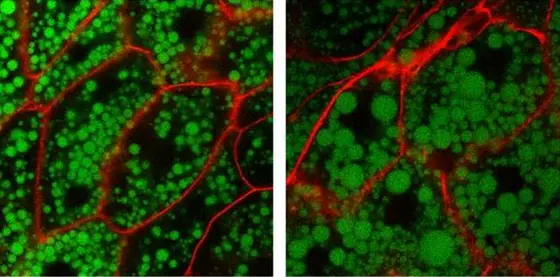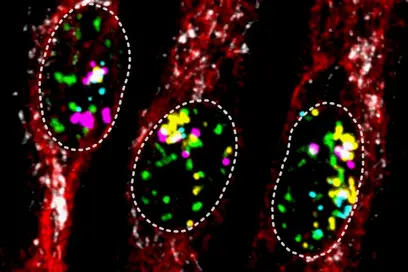THADA has previously been identified as one of the key genes in humans that differs in people from arctic latitudes and people from tropical latitudes. “When you remove THADA, then the cells store more fat and produce less heat. When you restore THADA function, the cells store less fat and burn more energy,“ explains study co-author Aurelio Teleman of the German Cancer Research Center (Deutsches Krebsforschungszentrum, DKFZ) in Heidelberg, Germany. “It's a metabolic regulator that affects the balance between how much energy your body turns into fat versus how much of it gets burned.“
When the researchers tested obese flies' response to cold by putting them in a walk-in refrigerator, they found that they were less able to cope. At near freezing temperatures, fruit flies “pass out,“ but when the researchers returned cold-immobilized flies to a warmer room, THADA knockout flies took longer to “wake up“ than their wild-type counterparts. That result surprised study co-author Alexandra Moraru of DKFZ. “We suspected that fatter animals would have better insulation and be more resistant to the cold, but in this case, they were more sensitive to cold,“ she says.
However, the fact that flies with slower metabolisms took longer to recover from cold makes more sense in light of the observed correlation between tropical latitudes and obesity. In warmer regions, the heat from burning fat isn't as important for survival as it is in colder climates. Obese flies, which have a slower metabolism, burn less energy and thus cannot adapt to colder environments as quickly.
Of course, humans and fruit flies are quite different when it comes to anatomy, making it difficult to compare human obesity and fruit fly fat storage. “Unlike humans, flies have an exoskeleton, which means they have a solid carapace on the outside and that constrains how much they can expand,“ explains Teleman. “So if you just look at a fat fly from the outside, it's hard to notice any difference, but then if you open it up and look inside, then you can see that there's a bunch more fat in the abdomen.“
However, there are reasons to think that human and fly metabolisms are pretty similar at the cellular level. Previous fly studies have identified metabolic genes that turned out to be standout predictors of obesity predisposition in humans. In addition, when a previous population genetics study compared the genomes of Siberian people to genomes of people from the lower latitudes of Southeast Asia, they found that THADA was one of the genes in which the two populations diverged the most. However, until this study, scientists weren't sure what THADA's function was.
In this study, the obesity of THADA knock-out flies was rescued both when the researchers restored fruit fly THADA functionorwhen they added human THADA to the flies' genomes, suggesting that THADA has the same metabolic effect in both mammals and fruit flies. “All the hints are there that THADA will probably be an important metabolic regulator in mammals as well,“ says Teleman.
The team is following up on that hypothesis by collaborating with a UK lab to study THADA's function in mice.
This work was funded by the Deutsche Krebshilfe and the Deutsche Forschungsgemeinschaft SFB1118.
Moraru and Cakan-Akdogan et al.: THADA regulates the organismal balance between energy storage and heat production Developmental Cell 2017, DOI: 10.1016/j.devcel.2017.03.016



